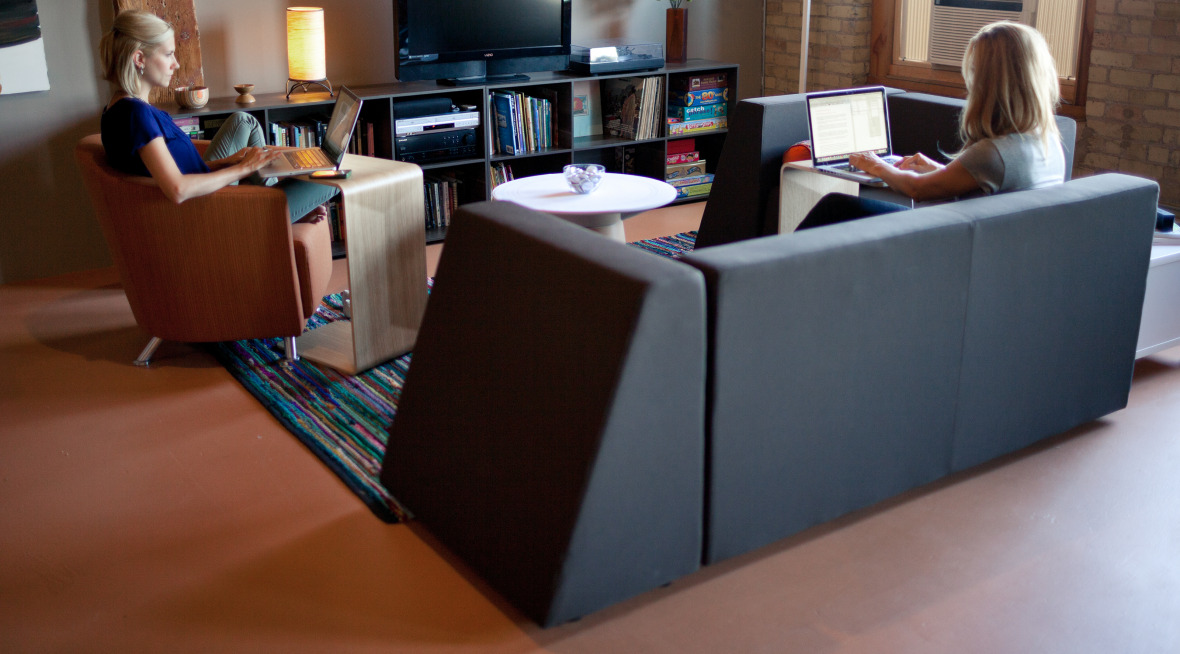City or suburbs. In this day and age of telecommuting, WiFi, mobile devices, and people choosing to walk, bike or take public transportation rather than drive their cars, employers are paying close attention to see where the Millennial generation of workers prefer to be located. This new workforce values sustainability, wellness, loft-like spaces, and locations that are active, transit-friendly, and walkable. So what trends are inspiring this shift in thinking.
Trend 1: The new corporate campus
Location, usage of smart technology and community-serving amenities are a big deal for Millennials. While the ‘working under one roof’ concept will continue, spaces will be redesigned to portray vertical campuses in urban locations. Anything that will inspire creativity and make workers want to stay. Seen Facebook’s newest campus yet?
Trend 2: Commercial office building redesign
Offices are hiring a younger, more creative and collaborative workforce. And developers are redesigning their commercial office buildings to help tenants recruit and retain this new generation workforce. Take, for example, The Offices @ MOA located in Minnesota.
Trend 3: Making change transformative
Change management as we know it is going through a huge change, no pun intended! Workforce mobility and higher real estate densities are the biggest influencers. Strategized change can be customized as per a company’s business goals, brand and office culture to ensure success. Plus, social media will play an important role to get end-user feedback.
Trend 4: A more eco-friendly energy industry
The energy industry is both volatile and agile. The future energy workplace, with its reliance on smart technology, will be flexible, adaptable, and embodies a no-waste ethic. So it’s efficient, sustainable and healthy.
Trend 5: Ensuring brands stay relevant
In the past, brands focused on the products. Today, that focus has clearly shifted. It’s all about the consumer now. Products need to exist to complement customer lifestyles. Artisanal goods are cherished, for instance, as customers want to emotionally identify and connect with the product and the artist producing it.
Trend 6: Tech-modernizing rental properties
Landlords are re-designing their commercial properties to cater to their renters’ needs for workspaces that appeal to millennials. The spaces need to be creative, infused with technology, lush with amenities and cost effective. They also need to be fluid so that they can be reshaped on the fly.
Trend 7: Tech and its implications for real estate
As far as large companies go, the tech industry is a breed unto itself. They are fast paced, technology driven, very creative, extremely mobile and always in flux. That’s why we note that some companies favor large-floorplate campuses—productivity increases if everyone collaborates under under one roof—while others prefer urban vertical campuses.
Trend 8: Keeping the US secure, urban and collaborative
Defense and aerospace companies are hoping to reshape their work areas to align engineering and product fabrication, while mixing in transit access and nearby amenities to attract and retain their younger workers. Like other industries, even here we’ll see the growth of facilities that support collaboration and workspace reshaping to meet evolving needs.
Trend 9: Government being frugal
The US government has also gotten tech savvy by embracing sustainable, high-performing design and systems, and implementing new workplace standards and integrating mobility strategies. By reducing operational costs, the state and federal governments will be able to offer more economically priced services to citizens.
Trend 10: The world is your studio
Digital content is everywhere. Thanks to smart mobile devices with cameras and editing apps and web channels, venues and distributors, producing videos, online games, music and other digital creations takes very little time. The media sector is still wrapping its head around this demand. Digital creation is fluid, intense and collaborative. An actual studio is passé.
Trend 11: Being more digital and accessible
In this day of digital tech, even financial services have jumped on the bandwagon and are using apps and other digital interfaces to reach their customers. There’s a need to make finance protocols and policies more transparent. Making everything more tech-friendly and ensuring a creative workspace is a surefire way to retain millennial employees.
Trend 12: Staying relevant for the future
More professional services firms are reducing space and converting what they have into high-performance workplaces. Smart technology will be widely used, and co-working and face-to-face engagement with clients and colleagues will be encouraged.
Trend 13: Surge in innovative products
It’s a buyer’s market. New materials, fabrication methods, tech developments and economically produced prototypes are influencing ideas for new products. Firms are locating their innovation labs where the action is—to large cities where buyers can interact with their products while still in the early stages of innovation.
Trend 14: Labs as an evolving space
Life sciences workplaces, unsurprisingly, have also been transformed by technology. Labs today are more modular and flexible. This allows researchers to be more creative, collaborative and form interdisciplinary teams, and collaborate synergistically with other scientists. (image via Steelcase)

